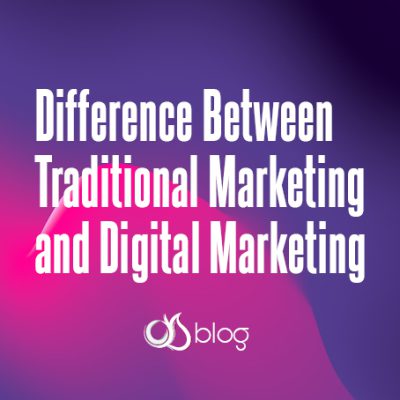
In the competitive landscape of education, academic companies play a pivotal role in shaping the future of learning institutions. Branding has emerged as a powerful tool for these companies to establish their reputation, attract students, and create a unique identity. In this blog post, we’ll embark on a journey to explore the world of academic company branding. From understanding the strategies employed to overcome challenges and examining success stories, we’ll delve into the intricacies of branding in the education sector.
The Importance of Academic Company Branding
Branding is crucial for academic institutions. It helps them establish a unique identity and communicate their value proposition. Differentiation and competitive advantage are key. A strong brand highlights strengths and attracts students, faculty, and partners. Branding builds reputation and trust.
A reputable brand enhances credibility and influences perception. It attracts students and cultivates a sense of belonging. Faculty and staff engagement is impacted by branding. A strong brand creates purpose and pride, attracting and retaining top talent. Alumni relations and philanthropy are strengthened.
Positive brand experiences encourage engagement and support. Branding facilitates partnerships and collaborations. A strong brand signals credibility and shared vision. It ensures long-term sustainability. Branding is multi-faceted and essential for success.
Top Ten Strategies for Effective Academic Company Branding
Effective branding is crucial for academic companies to establish a strong presence, differentiate themselves from competitors, and attract students, faculty, and partners. Here are several strategies for effective academic company branding:
- Define Your Brand Identity: Clearly define your brand identity by identifying your institution’s unique value proposition, mission, vision, and core values. Understand what sets your institution apart and how you want to be perceived in the market.
- Conduct Market Research: Conduct thorough market research to understand your target audience, their needs, preferences, and aspirations. This research will help you tailor your branding efforts to resonate with your ideal students, faculty, and partners.
- Develop a Compelling Brand Story: Craft a compelling brand story that communicates your institution’s history, achievements, and impact. Highlight the success stories of your students, faculty, and alumni to showcase the transformative power of your educational programs.
- Design a Strong Visual Identity: Develop a visually appealing and cohesive brand identity that reflects your institution’s values and resonates with your target audience. This includes designing a logo, selecting a color palette, typography, and visual elements that evoke the desired emotions and perceptions.
- Create Consistent Messaging: Develop consistent messaging that clearly communicates your institution’s value proposition, key messages, and brand personality. Ensure that your messaging is aligned across all communication channels, including website content, social media, marketing materials, and campus signage.
- Engage with your Stakeholders: Actively engage with your stakeholders, including students, faculty, staff, alumni, and the wider community. Create platforms for feedback, dialogue, and collaboration to build a sense of community and ownership. This can include organizing events, conducting surveys, and leveraging digital platforms for engagement.
- Utilize Digital Marketing Channels: Leverage digital marketing channels to reach and engage with your target audience effectively. Develop a strong online presence through search engine optimization (SEO), social media marketing, content marketing, and email marketing. Utilize storytelling techniques and multimedia content to showcase your institution’s strengths and impact.
- Foster Partnerships and Collaborations: Seek partnerships and collaborations with businesses, industry leaders, research institutions, and community organizations. Aligning with reputable organizations can enhance your institution’s credibility, expand opportunities for students, and create a positive brand association.
- Monitor and Adapt: Continuously monitor and evaluate the effectiveness of your branding efforts. Gather feedback from stakeholders, track key performance indicators, and make adjustments as needed. Stay updated with market trends and adapt your branding strategies to stay relevant and competitive.
- Provide Exceptional Student Experience: Your branding efforts should align with the actual student experience. Focus on delivering exceptional educational programs, supportive services, and a positive campus culture. Happy and satisfied students become brand advocates, contributing to the overall success of your branding efforts.
Remember, effective branding is an ongoing process that requires consistency, authenticity, and adaptability. By implementing these strategies, academic companies can build a strong brand that resonates with their target audience, enhances their reputation, and drives success in the competitive education landscape.
Challenges and Solutions in Academic Company Branding
Building a strong and consistent brand across multiple campuses or programs is a challenge that many academic companies face. It requires careful coordination, effective communication, and innovative solutions to ensure a cohesive brand experience. While this task may seem daunting, numerous institutions have successfully navigated these challenges and emerged with inspiring solutions. Let’s explore some common challenges and the innovative approaches that have proven successful.
Maintaining Consistency:
One of the primary challenges is maintaining consistency in branding across multiple campuses or programs. Each location may have its unique characteristics, resulting in a potential dilution of the overall brand identity.
Innovative Solution: Implementing brand guidelines and standards is crucial to ensure consistency. These guidelines should cover visual elements, messaging, and tone of voice. Institutions can establish a centralized brand management team responsible for overseeing the implementation of branding guidelines. Regular training and workshops can be conducted to educate stakeholders across campuses, ensuring that they understand and adhere to the brand standards.
Balancing Individuality and Cohesion:
Academic companies often have diverse programs or departments, each with its unique identity and target audience. Balancing the need for individuality while maintaining a cohesive institutional brand can be a delicate challenge.
Innovative Solution: Adopting a “branded ecosystem” approach allows for individual program or department branding within the overarching institutional brand. This approach acknowledges the uniqueness of each entity while ensuring alignment with the institution’s core values and visual identity. Clear guidelines and approval processes can be put in place to maintain consistency and prevent brand fragmentation.
Engaging Stakeholders:
Engaging stakeholders, including faculty, staff, students, and alumni, is crucial for successful branding. However, achieving widespread buy-in and active participation can be a challenge, particularly in large academic institutions.
Innovative Solution: Implementing inclusive and collaborative branding initiatives can foster stakeholder engagement. Institutions can create platforms for feedback and input, such as branding committees or focus groups. Involving stakeholders in the branding process and highlighting their contributions can instill a sense of ownership and pride.
While academic companies face challenges in maintaining consistency, balancing individuality, and engaging stakeholders in their branding endeavors, innovative solutions can pave the way for success.
The Role of Branding in Student Experience
Academic company branding plays a significant role in shaping the overall student experience. A strong brand can positively influence several aspects of the educational journey, from first impressions to alumni engagement. Here are some ways in which academic company branding can enhance the student experience:
First Impressions and Campus Environment
First Impressions: A strong brand creates a positive first impression for prospective students. It conveys credibility, professionalism, and a clear identity. When students encounter a well-established and reputable brand during the admissions process, it can instill confidence and trust in the institution. This positive initial experience sets the tone for the rest of the student’s educational journey.
Campus Environment: A well-defined brand identity often extends to the physical campus environment. A strong brand can shape the design, aesthetics, and atmosphere of the campus, creating a cohesive and inviting environment for students. From architecture to signage and interior design, the brand elements can contribute to a sense of belonging, pride, and community.
Sense of Belonging, Academic Programs, and Alumni Engagement
Sense of Belonging and Identity: A strong academic company brand helps foster a sense of belonging and identity among students. It provides a shared purpose, values, and traditions that students can identify with. This sense of belonging contributes to a positive and inclusive campus culture, where students feel connected to their peers, faculty, and the institution as a whole.
Academic Programs and Offerings: Branding can influence students’ perceptions of the quality and relevance of academic programs and offerings. A strong brand that emphasizes educational excellence, innovative teaching methods, and industry partnerships can attract students who align with the institution’s values and aspirations. This alignment enhances the student’s confidence in their choice of program and contributes to a more fulfilling educational experience.
Student Support Services: Branding also extends to the various student support services offered by academic companies. A strong brand can communicate a commitment to student success, leading to the development of robust support systems, such as career services, counseling, tutoring, and extracurricular activities. These services contribute to a holistic educational experience, supporting students’ personal and professional growth.
Alumni Engagement: A strong brand creates a sense of pride and loyalty among alumni. When students graduate from an institution with a positive brand reputation, they are more likely to remain engaged with the institution as active alumni. Alumni engagement programs, events, and networking opportunities strengthen the bond between current students and alumni, providing invaluable mentorship and career development opportunities.
Opportunities, Networks, and Reputation
Opportunities and Networks: A reputable academic company brand attracts partnerships, collaborations, and guest speakers from various industries. This opens doors to diverse opportunities for students, such as internships, research projects, and networking events. These connections and experiences enrich the student journey and provide valuable real-world perspectives.
Reputation and Recognition: A strong brand positively impacts the reputation and recognition of an academic institution. A well-regarded brand attracts attention from employers, graduate schools, and the wider educational community. This recognition enhances the value of the degree and the opportunities available to students after graduation.
Academic company branding impacts the student experience through positive first impressions, campus environment, belonging, academic support, alumni engagement, opportunities, and reputation. A strong brand creates a fulfilling educational journey, making students valued, supported, and connected.
Measuring the Impact of Academic Company Branding
When it comes to measuring the effectiveness of academic company branding efforts, several key performance indicators (KPIs) and metrics can provide valuable insights. These measurements help gauge the impact of branding strategies and evaluate the success of initiatives. Here are some commonly used KPIs and metrics in the context of academic company branding:
- Enrollment Numbers: Tracking changes in enrollment figures can indicate the effectiveness of branding efforts. Monitoring the number of new student applications, admissions, and overall enrollment can provide insights into how the institution’s brand is perceived and its ability to attract prospective students.
- Student Retention and Graduation Rates: Retention rates reflect the ability of an academic institution to meet students’ needs and provide a positive educational experience. High retention rates indicate that the branding efforts have created a strong sense of belonging and student satisfaction. Similarly, monitoring graduation rates can help evaluate the effectiveness of branding in supporting student success and academic achievement.
- Brand Awareness and Perception: Surveys and market research can be conducted to assess brand awareness and perception among different stakeholders, including students, faculty, alumni, and the wider community. These surveys may explore factors such as brand recognition, reputation, perceived quality, and alignment with institutional values. Monitoring changes in brand perception over time can help evaluate the impact of branding initiatives.
- Website Traffic and Engagement: Analyzing website metrics like unique visitors, page views, and time spent provides insights into online branding. Higher traffic and engagement indicate effective branding that resonates with the audience and generates interest.
- Social Media Metrics: Tracking social media engagement, such as likes, shares, comments, and follower growth, gauges brand reach and interaction. It evaluates branding campaign effectiveness and audience affinity with the brand.
- Alumni engagement and participation: in institutional activities, events, and giving reflect brand connection. Metrics like event attendance, volunteerism, and financial contributions demonstrate loyalty and pride among graduates, indicating successful branding efforts.
- Employer Perception and Partnerships: By assessing how employers perceive the institution’s brand and the extent of industry partnerships, valuable insights can be gained regarding the institution’s reputation and the perceived value of its graduates. Surveys, employer feedback, and tracking employer partnerships and internships can serve as effective tools to measure the efficacy of branding efforts in establishing robust connections with the professional world. Furthermore, these assessments enable institutions to adapt their branding strategies and cultivate stronger relationships with employers, enhancing the employability and success of their graduates.
- Media Coverage and Public Relations: Monitoring media mentions, press coverage, and the tone of media articles related to the institution can provide insights into the visibility and reputation of the brand. Positive media coverage and favorable public relations can indicate the success of branding efforts in positioning the institution effectively.
It’s important to note that these KPIs and metrics should be tailored to the specific goals and objectives of each academic institution. Regularly tracking and analyzing these measurements can help academic companies assess the effectiveness of their branding strategies and make data-driven decisions to enhance their brand presence and reputation.
Final Words
Academic company branding plays a significant role in shaping the reputation, student experience, and overall success of educational institutions.
Academic companies can create a compelling narrative by investing in a strong brand, employing effective strategies, and overcoming challenges. A well-executed branding strategy elevates institutions to new heights of excellence. Establishing brand guidelines, adopting a branded ecosystem, and implementing inclusive engagement strategies inspire a commitment to the brand. These efforts create a unified brand experience that empowers students, faculty, staff, and alumni to achieve greatness.










Eddiegalay
One of the best blog posts I have read on the subject. So thorough. Thanks for sharing!
Donaldnag
Gday to every single one of our soothing water fans! Thanks for sharing this blog post. Much appreciated!
Michael Holmes
Nice one, Siamak. Keep it up.
ThomasCunse
Friends at work will love this, sharing it now.
Samira
Such a cool post. very informative!
Sahar
Interesting topic, I should also add I really enjoyed how the content is presented, and the banner used for this post is so creative.
John Parson
WOW, thanks for sharing this amazing blog post. I found everything there is to this topic. Loved it. Just loved it.